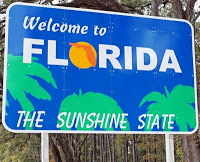
Top 3 Most Dangerous Cities for Teen Drivers are in Florida
August 29, 2009
Two studies, one by Allstate Insurance Company and the other by Reader’s Digest, indicate that geography plays a part in teens’ risk of injury and death in motor vehicle crashes. And because of their age group, teens are already at great risk. The number one killer of American teens is motor vehicle crashes; one study shows that the problem is particularly serious in Florida. Every year, over 5,000 people aged 16-20 are killed in motor vehicle collisions, according to the National Highway Traffic Safety Administration.
The ten riskiest cities out of the 50 largest urban areas in the US were selected using statistics from the national Census Bureau, federal crash data, and company claims information on teen passenger vehicle collisions. The most dangerous US cities for teen drivers are Southern, with the top three in Florida. Of the top 50 cities in the country for teen fatality crashes, Tampa/St. Petersburg/Clearwater, Orlando/Kissimmee, and Jacksonville rank number one, two and three, respectively.
The analysis by Reader’s Digest categorizes states according to their current Graduated Driver’s Licensing (GDL), seat belt, and Driving Under the Influence (DUI) laws. According to the study, Alaska, California and Delaware rank as the top three; three of the worst states include North Dakota, Mississippi and Arkansas. Florida is categorized as “Fair,” the next-to-lowest ranking. Interestingly, California cities also scored high in the Allstate study: San Francisco/Oakland, San Jose, and Los Angeles were numbers one, two, and four.
Factors that contribute to teen motor vehicle crashes include:
- Speeding/driving too fast for conditions -Driver distraction, including cell phone use and dealing with passengers -Inexperience -Driving at night -Driving under the influence of alcohol or drugs (including prescription and over-the-counter drugs)
- Teens also often neglect to wear their seat belts, increasing the risk of serious injury or death in a crash. An observational study by the Utah Department of Health found that the teen seat belt use rate falls when other high-risk factors are present, such as when teens drive under the influence of alcohol, drive at night, have multiple teen passengers, or are driving without a driver’s license.
The risk factors listed above, including seat belt requirements, are addressed by GDL laws in many states. Before advancing to the next phase of licensure, young drivers must show progress by complying with specific restrictions. Driver education was a part of the curriculum in 90% of US high schools during the 1980s; in 2009, only 20% do. GDL laws are of increasing significance in the effort to reduce teen crash rates, because teens get most of their driver training from their parents and are often subject only to state requirements after licensure.
While a national model for GDL laws has existed since the mid-1990s, no state follows all of the requirements. To show the disparities among states, The National Safety Commission (TNSC) analyzed the GDL laws in four states: California, Florida, Mississippi, and North Dakota.
- The minimum age for a learner’s permit in California is 15 years, six months; the minimum age is 15 in Florida and Mississippi. In North Dakota, the minimum age is 14.
- While California and Florida each require 50 hours of practice driving with a parent or guardian in the learner’s permit stage, 10 hours of which must be at night, neither Mississippi nor North Dakota require parental certification of any driving practice hours.
- North Dakota does not have any passenger or nighttime restrictions, and Florida and Mississippi have only nighttime restrictions. California’s passenger restriction is that for the first 12 months, the restricted driver may have no passengers younger than 20, with limited exceptions for immediate family.
Comprehensive GDL laws reduce deaths among 16-year-old drivers by 38%, according to a study by Johns Hopkins University for the AAA Foundation for Traffic Safety; the Reader’s Digest study also supported the idea that better GDL laws mean that fewer teens will die in motor vehicle crashes. However, TNSC points out that parents must actively participate in their teens’ driver education by enforcing GDL laws as house rules, rather than leaving the issue to law enforcement. The possibility of legal consequences for teens who don’t abide by their state’s GDL laws should serve as support for parental restrictions, not take the place of them.
